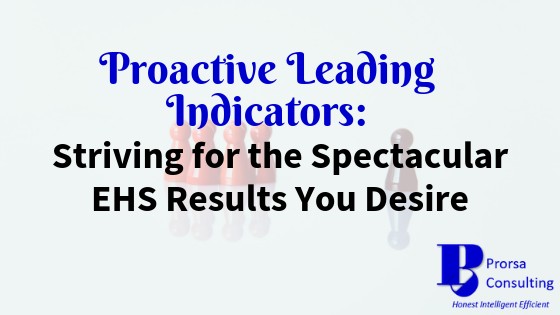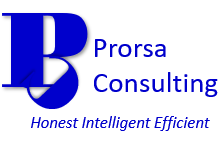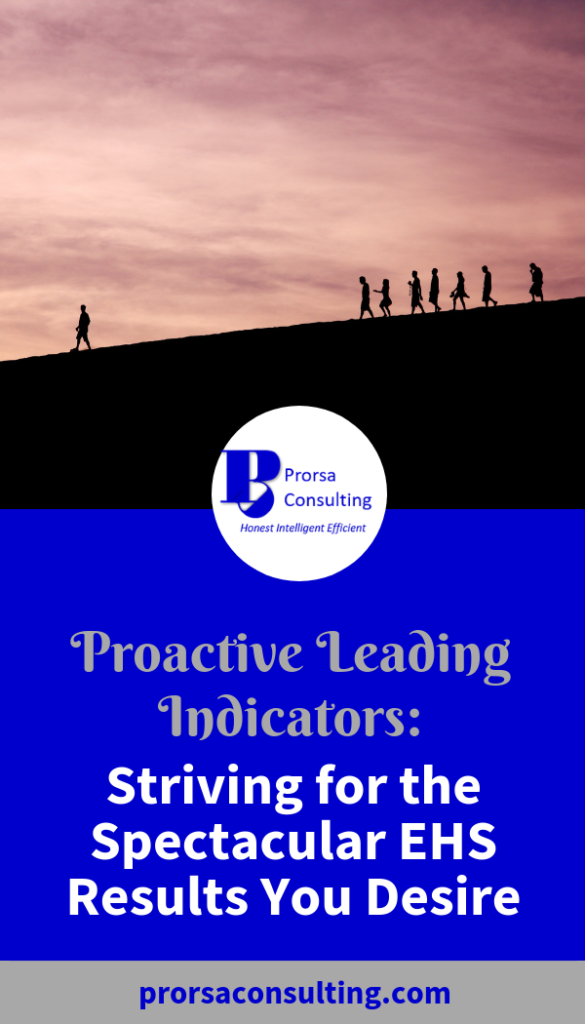Proactive Leading Indicators: Striving for the Spectacular EHS Results You Desire
By : Admin -

Have you ever heard anyone sound excited by the prospect of lagging behind in a race or contest? Of course not! Humans have a competitive spirit and desire to lead the competition in the hopes of being first or the best.
Those around us cultivate this competitive spirit within us from birth. Therefore, we love reaping positive rewards for our wins, which reinforces the belief that leading is best.
So, why do we continue to push lagging indicators of environmental, health, and safety (EHS) performance rather than the leading ones? It seems counterintuitive since, in other areas of life, leading represents excellence. Read on as we make the case for increased use of proactive leading indicators over reactive lagging ones for EHS.
Disclaimer: Please be aware that this blog post may contain affiliate links and any purchases made through such links will result in a small commission for Prorsa Consulting (at no extra cost for you). Feel free to visit our Disclosure of Material Connection page for more information.
Proactive Leading Indicators versus Reactive Lagging Indicators
Leading indicators measure the positive, pre-emptive actions taken to prevent undesirable events before they occur. Thus, these actions often may go above and beyond simple compliance. Lagging indicators promote proactiveness because you take prevention steps prior to an unwanted occurrence.
Lagging indicators usually measure data on adverse events after they have occurred. Subsequently, this presents a major drawback since you miss prevention opportunities when focused on lagging indicators.
Let us think about leading and lagging indicators against the Chinese proverb by Lao Tzu, “Give a man a fish and you feed him for a day. Teach him how to fish and you feed him for a lifetime.”
By focusing on lagging indicators, you provide employees and management the fish for the day. Unfortunately, I have been in safety briefings consisting of something like, “We had 5 recordable injuries this month. Encourage everyone to be more attentive and careful out there.”
So, you gave me the fish, but now I am just hoping people become more attentive and careful in the hopes of avoiding an injury.
Alternatively, an emphasis on leading indicators gives workers and managers the tools to actually catch the fish. Imagine that same safety briefing entailing, “We trained 100 workers on eye safety this month, giving our employees better knowledge to protect themselves. The attention to this topic also prompted 5 employees to intervene during safety observations and correct others’ unsafe behaviors that could have led to eye injuries.”
Which sounds better to you? Counting injuries or tracking employee training and safety observations?
Making the Case for Proactive Leading Indicators
Proactive leading indicators put you in charge of your own destiny.
Individuals actively make choices to affect the outcomes of proactive leading indicators. Conversely, lagging indicators are passive. So, you basically wait for something bad to happen.
Nevertheless, the active nature of proactive leading indicators allows for choice, which gives more control over end results.
Proactive leading indicators drive continuous improvement.
With proactive leading indicators, organizations identify the measures to lead them in the direction of improved performance. Additionally, leading indicators embody a preventative stance toward EHS management.
Furthermore, increased prevention activities eventually lead to better performance. You stop incidents and deviations, raise worker awareness and skill, recognize and address potential compliance violations, etc. before they result in unfavorable events.
Proactive leading indicators give opportunities to incorporate EHS in other business areas.
Since proactive leading indicators give organizations choice, indicators can be crafted to affect outcomes in multiple functional business areas. For example, a proactive leading indicator may consist of a 10% increase in the number of energy efficiency improvement projects completed.
These projects would help reduce greenhouse gas emissions. Moreover, they would assist operations because unit production costs would decrease due to the reduction in fuel spend if the projects are successful.
Proactive leading indicators promote increased worker engagement.
Proactive leading indicators can take many shapes and forms. Accordingly, this allows numerous differing opportunities for workers to become involved in the work to improve end results.
In addition, proactive leading indicators encourage workers to increase their reporting efforts. The positive outcomes associated with leading indicators are much more likely to be reported than the negative outcomes often connected to lagging indicators.
Leading Indicators & Trends to Predict Health Injuries and Environmental Incidents
Where to Start with Proactive Leading Indicators
In reality, you probably already engage in proactive EHS behaviors at your facility. Nevertheless, these activities won’t become proactive leading indicators until you start tracking and identify targets for them. To get you started, some easy examples of proactive leading indicators appear below:
1. Number of employee training sessions or the number of employees trained on a specific focus topic
2. Closeout time for EHS corrective actions
3. Number of near misses reported
4. Amount of employee observations conducted
5. Total quantity of EHS audits and/or inspections performed –
- Want a couple of quick walkthrough inspections to help move you along? Check out 16 Quick Items for a Timesaving Environmental Walkthrough Inspection and Dear Noncompliance: Meet the Quick 16 Safety Walkthrough Inspection for information to get you going down the right path.
6. Amount of waste/byproduct recycled/sold
7. Increase in resource (fuel, water, raw materials) conservation efforts
8. Increase in EHS committee participation
9. Number of continuous improvement projects identified and/or completed
10. Number of Personal Risk Assessments (PRAs) and or Job Safety Analyses (JSAs) completed
- Did you miss our post on PRAs? You can discover the ease with which you can implement PRAs by visiting Robust Personal Risk Assessment in 4 Powerful Acts.
Check out additional information on proactive leading indicators at the following:
- Transforming EHS through Leading Indicators by the National Safety Council
- Optimizing Safety Through Leading Indicators from EHS Today
Other EHS Data & Performance Articles for You
Safety Key Performance Indicators to Guide Your Improvement Efforts
EHS Data Analysis: Use It Frequently to Tell the Powerful Story
Improve EHS Performance by Resolving the Poor Leadership People Never Tell You About
Final Thoughts
While lagging indicators have a place in every EHS program, focusing on proactive leading indicators sets up a program for its best success. Moreover, proactive leading indicators provide the means to strive for positive change to improve results.
Do you need assistance shifting your EHS program’s focus toward leading indicators? Prorsa Consulting to assist with this and your other EHS compliance and management needs. Check out the Services page for more information. In addition. you can contact us via contact@prorsaconsulting.com with any questions concerning our services.
We encourage your feedback on this blog’s content. Be sure to like and/or share below. You can also give us your feedback via our Contact Us page.
Don’t forget to follow Prorsa Consulting on Google+, LinkedIn, Pinterest, and Twitter.
Get the tools you need to support your EHS program in our Free Resources area. Subscribe to the Prorsa Consulting Newsletter below and receive access to our exclusive free materials.


